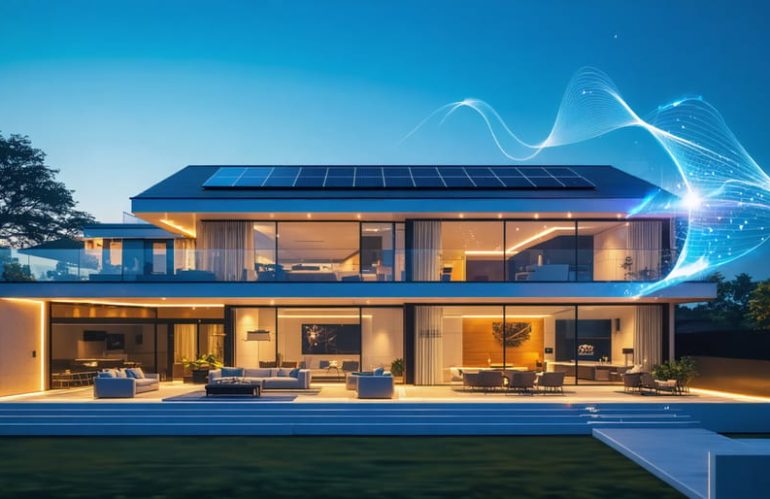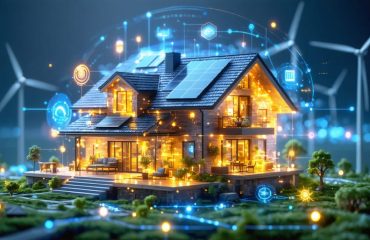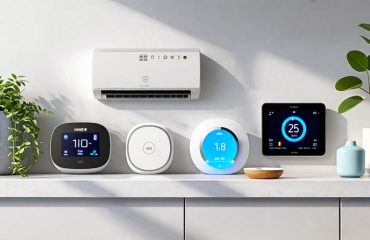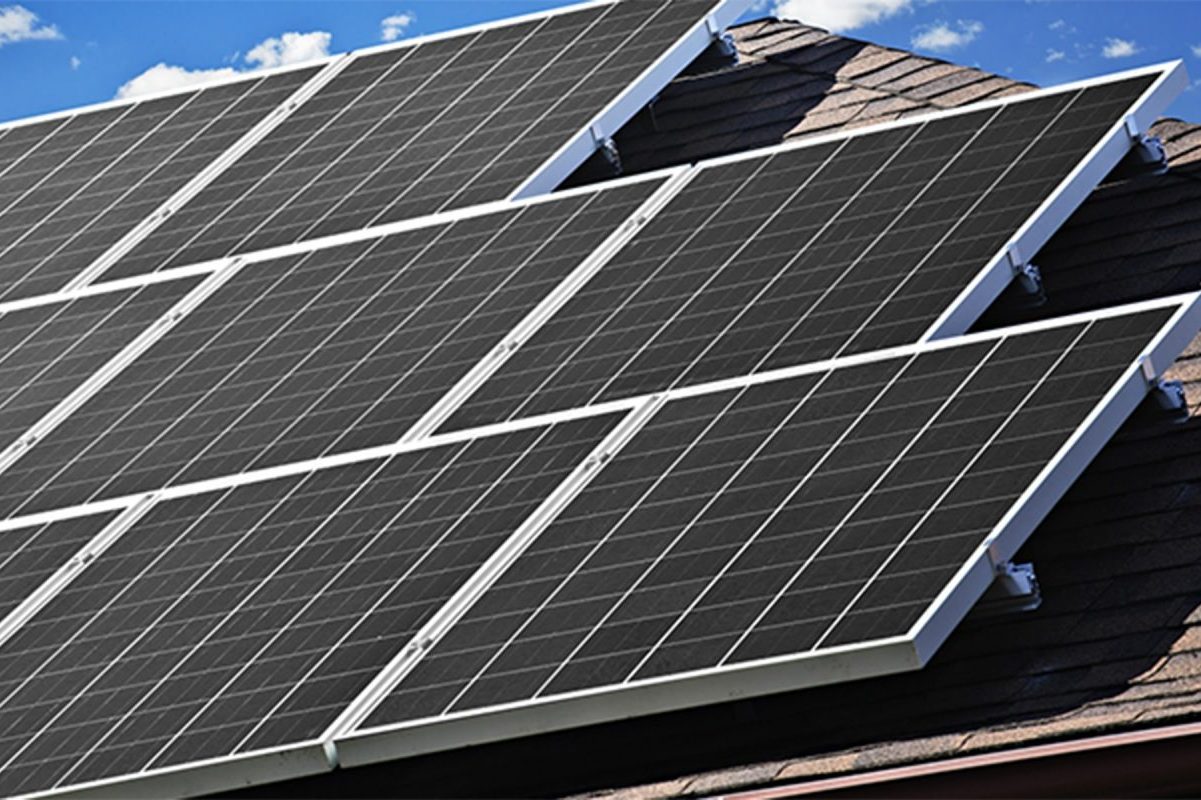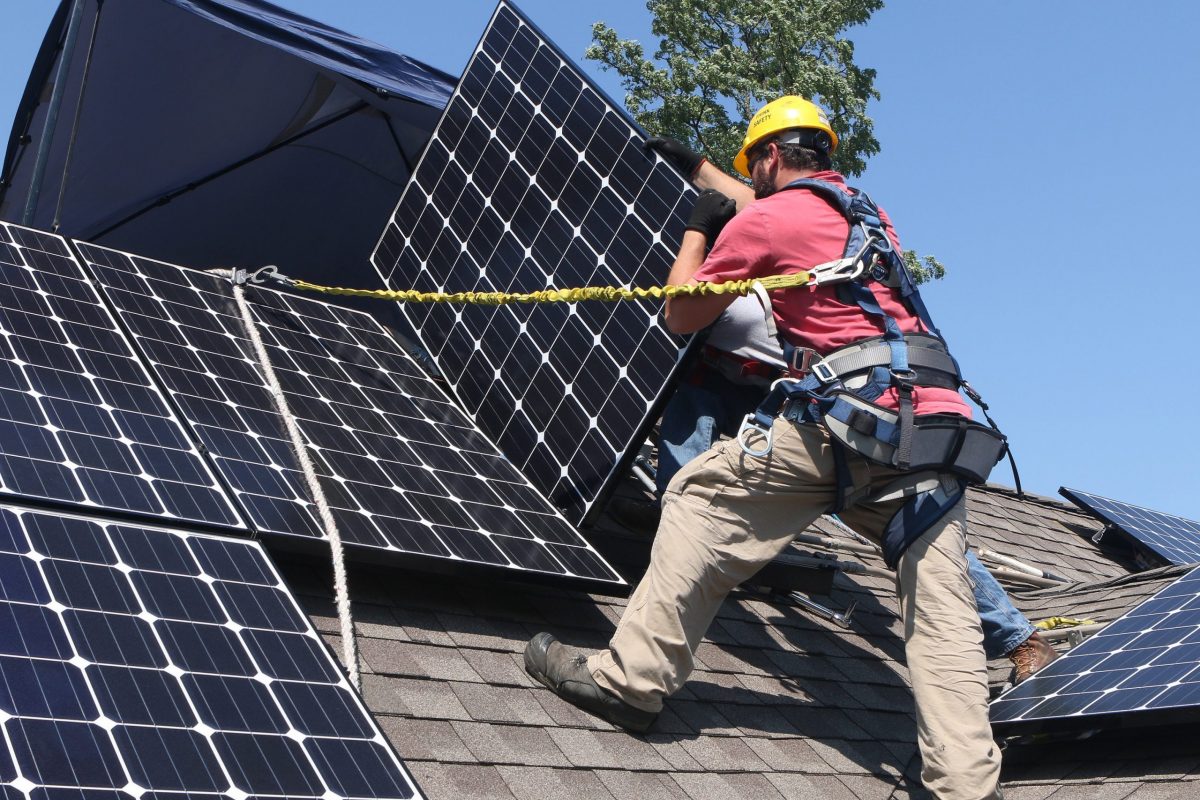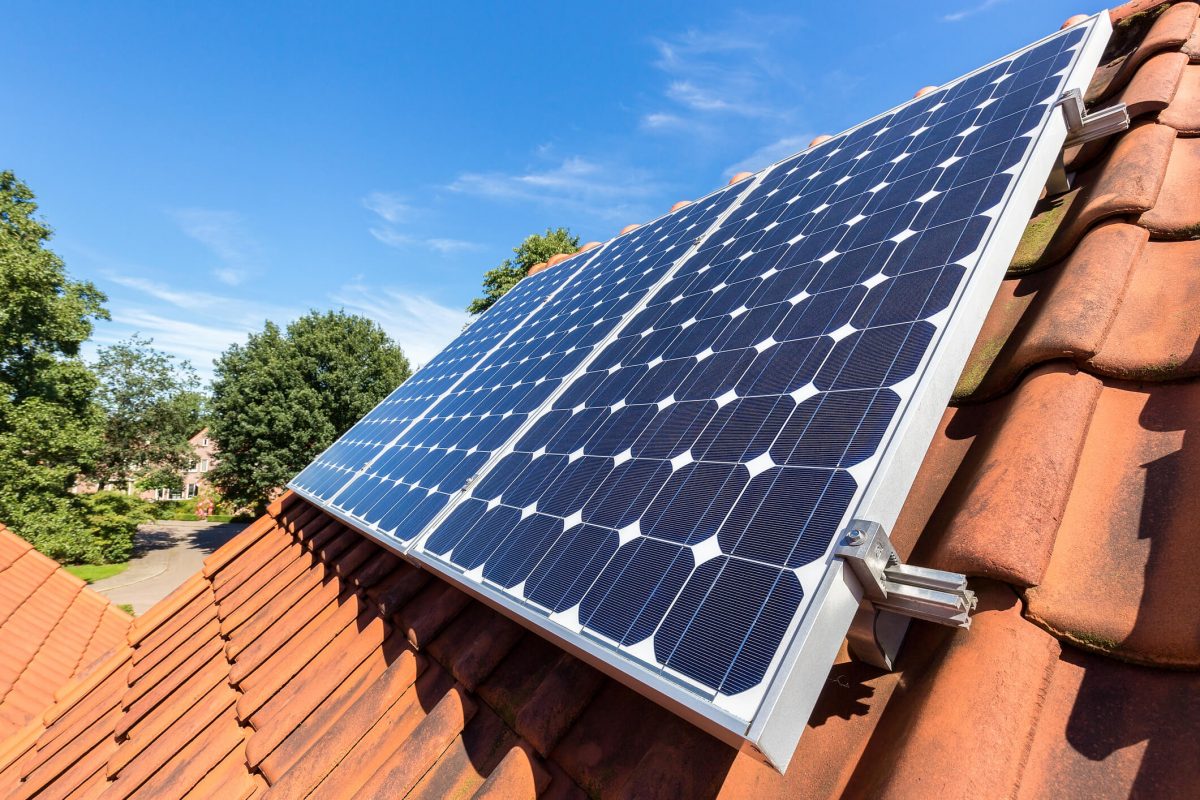Transform your home’s lighting into an intelligent, energy-efficient system that seamlessly integrates with residential solar power systems. Voice-activated lighting represents the next evolution in smart home technology, offering unprecedented control while reducing energy waste. Simply speak to adjust brightness, schedule automated routines, or instantly illuminate specific rooms—all without touching a switch. This hands-free solution not only enhances daily convenience but also optimizes energy consumption by ensuring lights operate only when needed. Modern voice-controlled lighting systems can reduce household electricity usage by up to 30% while providing the flexibility to manage your entire home’s illumination from anywhere. Whether you’re cooking with full hands, entering a dark house with groceries, or want to create the perfect ambiance for movie night, voice-activated lighting delivers both practical functionality and energy efficiency in one elegant solution.
How Voice-Activated Lighting Works with Solar Power
The Solar-Smart Home Connection
Solar power and smart home technology create a powerful partnership that maximizes energy efficiency and convenience. When you integrate voice-activated lighting with your solar system, you’re essentially creating a synchronized ecosystem that optimizes your home’s energy consumption.
During daylight hours, your solar panels generate electricity that can power your smart lighting system directly. Smart home hubs can be programmed to prioritize using solar power when it’s available, automatically switching lights on when your panels are producing excess energy. This intelligent management helps you maximize the use of your clean energy production.
Many modern solar inverters come with built-in smart home compatibility, making it easy to connect your voice-activated lighting system. Through your smart home app, you can monitor both your solar production and lighting consumption in real-time, helping you make informed decisions about your energy usage.
The combination also offers practical benefits beyond energy savings. For instance, you can set your voice-activated lights to automatically adjust based on your solar production, ensuring optimal energy use throughout the day while maintaining comfort and convenience.
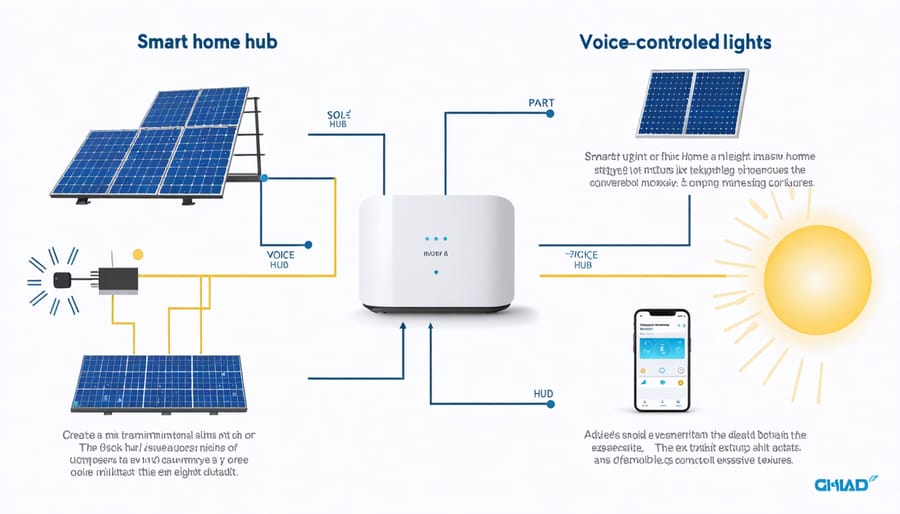
Voice Assistant Compatibility
Today’s leading voice assistants seamlessly integrate with most smart lighting systems, making it easier than ever to control your lights hands-free. Amazon Alexa, Google Assistant, and Apple’s Siri all support voice-activated lighting through their respective smart home platforms.
To get started, simply connect your smart lights to your home’s Wi-Fi network and link them to your preferred voice assistant through its companion app. Once set up, you can control individual lights or create groups for whole-room or whole-house control. Common voice commands include “turn on the kitchen lights,” “dim the living room to 50%,” or “set bedroom lights to warm white.”
Most major smart lighting brands like Philips Hue, LIFX, and TP-Link Kasa are compatible with multiple voice assistants, giving you the flexibility to choose your preferred platform. Some systems even allow you to create custom voice commands and automated routines, such as “movie time” to dim the lights automatically.
For the best experience, ensure your voice assistant and smart lights are connected to a stable Wi-Fi network and keep their firmware updated regularly.
Energy Savings and Benefits
Maximizing Solar Energy Usage
Integrating voice-activated lighting with your solar power system creates a powerful synergy that maximizes energy efficiency. Through smart home energy management, you can automatically adjust your lighting based on solar production peaks and natural daylight availability.
Voice commands allow you to fine-tune your lighting schedule to match your solar panel’s peak generation hours. For example, you can create routines that automatically dim or brighten lights based on the amount of natural sunlight available, ensuring you’re making the most of solar-generated electricity when it’s abundant.
During peak solar production hours, typically between 10 AM and 2 PM, voice commands can help you take full advantage of this free energy by adjusting brightness levels or turning on energy-intensive tasks. You can easily create morning and evening routines that optimize light usage based on your solar system’s performance.
The real beauty lies in the convenience – simply saying “Hey Google, activate solar saving mode” can trigger a preset routine that adjusts your entire home’s lighting to maximize solar power usage. This seamless integration helps reduce reliance on grid power during non-peak solar hours and ensures you’re getting the most value from your solar investment.
By combining voice control with automated scheduling, you can reduce your carbon footprint while maximizing the return on your solar investment – all without sacrificing comfort or convenience.
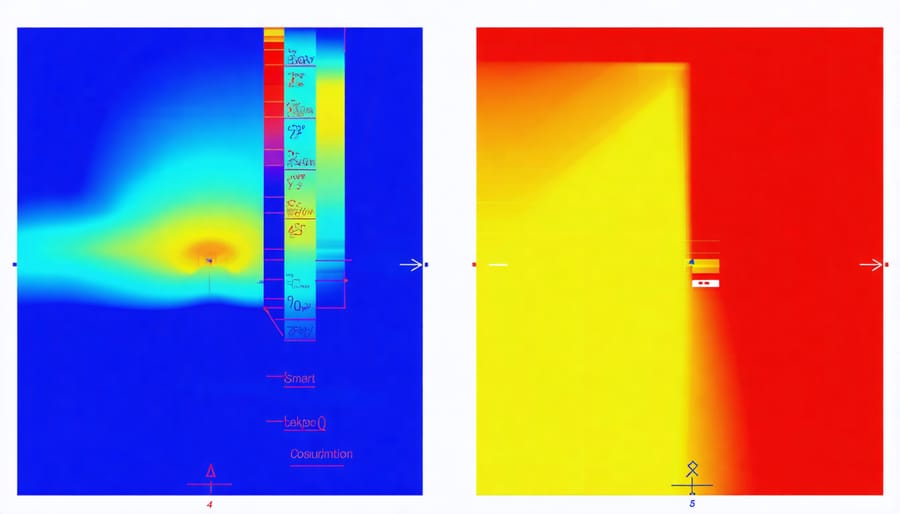
Real Cost Savings
Voice-activated lighting systems can lead to substantial savings on your energy bills through intelligent control and automation. Real-world examples show that households typically save between 25-35% on their lighting costs after implementing smart lighting controls.
For instance, a typical 2,500-square-foot home with traditional lighting might spend around $300 annually on lighting costs. After installing voice-activated smart lights, that same household could reduce their lighting expenses to approximately $200 per year, saving $100 annually through automated controls and more efficient usage patterns.
These savings come from multiple sources. Motion sensors automatically turn off lights in unoccupied rooms, saving up to 15% on unnecessary lighting. Scheduling features ensure outdoor lights only operate during dark hours, reducing waste by another 10%. Voice commands make it easier to control multiple lights at once, encouraging better energy habits and contributing to an additional 5-10% in savings.
Smart dimming capabilities also play a crucial role in cost reduction. By automatically adjusting brightness levels based on natural light availability or time of day, households can cut another 15% from their lighting energy consumption. When combined with LED bulbs, which use 75% less energy than traditional bulbs, the overall savings become even more significant.
For maximum benefit, many homeowners integrate their voice-activated lighting with other smart home features, creating a comprehensive energy management system that can reduce total home energy costs by up to 20%.
Setting Up Your System
Required Components
To set up voice-activated lighting in your home, you’ll need several key components that work together seamlessly. The heart of the system is a smart speaker or voice assistant, such as Amazon Echo, Google Home, or Apple HomePod. These devices serve as your primary control hub and respond to voice commands.
Smart bulbs are another essential component. Popular options include Philips Hue, LIFX, or Wyze bulbs, which connect to your home’s wireless network. You’ll also need a compatible smart hub or bridge if your chosen bulbs require one – though many newer models connect directly to WiFi without additional hardware.
A stable internet connection is crucial for reliable operation, as voice commands are processed through cloud services. Your home’s WiFi network should have good coverage in areas where you plan to install smart lighting.
For enhanced functionality, consider adding motion sensors or smart switches. These components can work alongside voice commands to create a more comprehensive lighting system. Some homeowners also opt for a dedicated smart home app on their smartphone as a backup control method.
Most systems require minimal additional hardware, but you may need to purchase compatible light fixtures or adapters if your existing fixtures aren’t compatible with smart bulbs. Remember to check voltage requirements and bulb sizes before making any purchases.
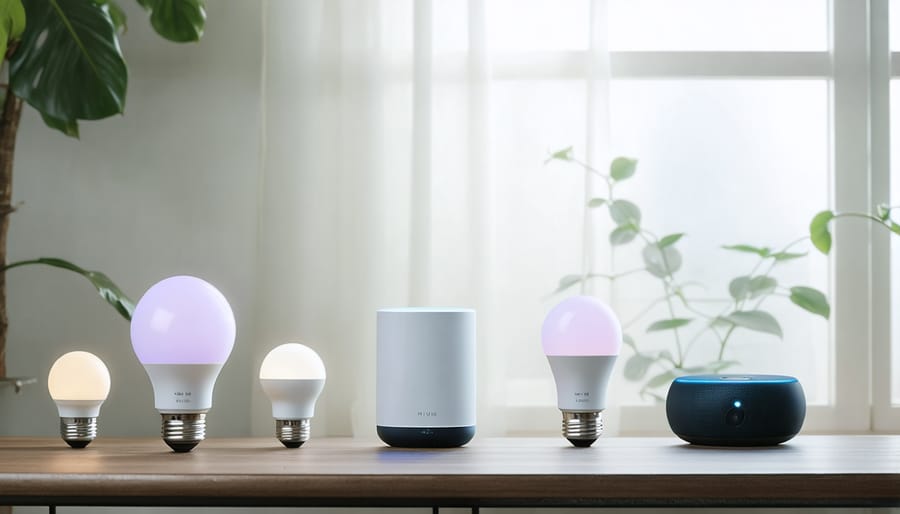
Installation Tips
Installing voice-activated lighting in your solar-powered home is simpler than you might think. Start by ensuring your existing smart home hub is compatible with your chosen voice-activated lighting system. Popular options like Amazon Alexa or Google Home work seamlessly with most modern home automation integration systems.
Begin by identifying the best locations for your smart bulbs or switches. Consider high-traffic areas where hands-free control would be most beneficial, such as entryways, kitchens, and living rooms. If you’re using smart bulbs, simply replace your existing bulbs and follow the manufacturer’s app setup instructions. For smart switches, you may want to consult an electrician to ensure proper installation, especially if your home’s wiring is older.
Connect your devices to your home’s Wi-Fi network and link them to your voice assistant of choice. Most systems allow you to create groups or zones, making it easier to control multiple lights with a single command. For optimal energy management, set up automated schedules that align with your solar production peaks.
Remember to place voice control units in central locations where they can easily pick up commands. Consider using mesh Wi-Fi networks if you have a larger home to ensure consistent connectivity throughout. Label your smart devices clearly in your app for easier voice control and troubleshooting.
Future-Proofing Your Home
Voice-activated lighting is just the beginning of smart home evolution. As technology advances, your current system can easily adapt to incorporate new features and capabilities. Many manufacturers now offer regular software updates that add functionality to existing devices, ensuring your investment stays current without requiring new hardware.
Looking ahead, we’re seeing the emergence of AI-powered lighting systems that learn your preferences and adjust automatically. These systems will anticipate your needs based on time of day, season, and even your mood. Integration with other smart home systems is also expanding, allowing your lighting to work seamlessly with security cameras, thermostats, and entertainment systems.
Future developments include enhanced natural light simulation, circadian rhythm optimization, and even health monitoring through lighting patterns. The modular nature of today’s voice-activated systems means you can add these features gradually as they become available.
For maximum future-proofing, consider choosing systems with open protocols and cross-platform compatibility. This flexibility ensures your lighting system can evolve alongside emerging technologies while maintaining its core voice-control functionality.
Voice-activated lighting represents a significant step forward in creating smarter, more energy-efficient homes. When paired with solar power systems, this technology not only enhances convenience but also maximizes energy savings through intelligent control and automation. By simply speaking commands, homeowners can ensure lights are only used when needed, reducing unnecessary energy consumption and extending the value of their solar investment. The integration of voice control with lighting systems is becoming increasingly affordable and user-friendly, making it an attractive option for environmentally conscious homeowners. As we move toward a more sustainable future, adopting voice-activated lighting in solar-powered homes isn’t just about embracing modern technology – it’s about making a practical choice that benefits both our planet and our wallets. Consider making the switch today to experience the perfect blend of convenience, efficiency, and environmental responsibility.

